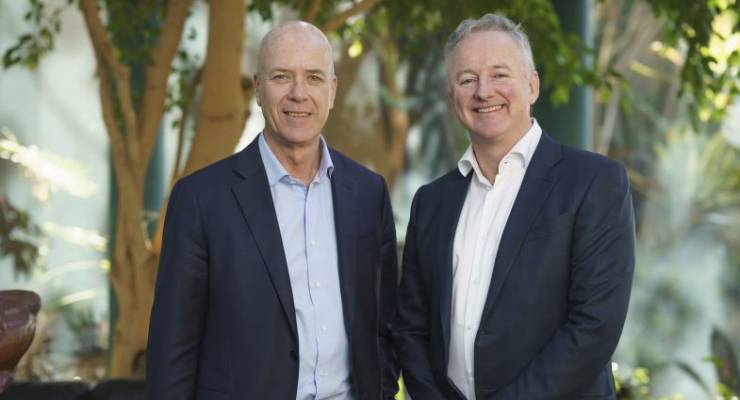
Fairfax CEO Greg Hywood and Nine CEO Hugh Marks
The ringing declarations about the Nine-Fairfax deal providing the scale to take on Google and Facebook has a 21st century resonance to the famous 1892 Hobart Mercury headline: “We warn the Tsar!”
At its best, the deal could leave Nine as the second rung player in streaming (after Netflix) at the expense of Foxtel. At its worst, it could condemn Nine management to years of wrangling two declining sectors. There’s a dirty secret in management theory: mergers usually end up worse for the hunter than for the prey. So what’s in the deal for Nine?
The definitive 2011 Harvard Business Review study of mergers found that about 70% failed, with the merged entity ending up being worth less than the sum of the separate parts. The ASX seems to be already pricing this loss into both Nine and Fairfax.
[The key legal change that enabled the Fairfax merger]
Companies go merger-hunting to get scale to be better at what they do, seeking for that most mythical of business beasts: synergy. It’s a beast so magical it can both boost revenues AND reduce costs.
The deal announcement estimated a rather prosaic savings of about $50 million. Sounds a lot, but less than 1% of combined turnover. The more flashy synergy — glimpsed briefly through the undergrowth — has been around The Block and Domain, although that wouldn’t need merging $2 billion companies.
The deal will entrench Nine’s image as the premium advertising product, with the merged company leapfrogging Seven West Media to be the leading home for bookings (according to the Standard Media Index), mainly due to the revenue diversification coming from Domain. Still, it’s an expensive way to buy market share.
The Nine-Fairfax deal is more about old media companies desperately attempting to keep themselves in the play in the face of the Netflix streaming challenge, like so much of the current merger mania — Fox and Disney in the US, the CBS takeover of Ten, the Fox Sports-Foxtel mash-up.
Streaming has become the platform of choice for consumption of television drama. Whereas free-to-air is the platform for real-time consumption: sport, news, reality shows.
Right now, the early mover Netflix is strongly positioned to dominate, both here and in the US. About 3.9 million of Australia’s 9 million households are reported to have a subscription, compared to about 1 million for Stan. Foxtel, in the related pay TV space, claims 2.8 million.
The Australian take-up of Netflix is about the same proportion as the US, over a much shorter window. (Australians do love being early adopters!) But after reasonably consistent quarter-on-quarter growth, Netflix wobbled in July as the market recognised that the US was close to peak Netflix, at close to top subscription pricing. It’s probably the same in Australia.
Nine is betting that there’s space in Australia for two streaming services, either complementing each other or sharing the market. Certainly, that’s the US experience where Netflix leads both new media (Amazon) and old (such as Hulu), but most subscribing households have two or more services. (The Australian market loves a duopoly!)
Stan needs content quality which depends on its deals with Showtime and CBS and, perhaps, picking up some of the Hulu and HBO product which currently feed Foxtel. It should hang on as at least number two, even if the new Disney-Fox or Amazon attempts to muscle into what is a rapidly maturing space.
Nine is reluctant to be seen to be challenging Foxtel directly, which has a superficially different offering (higher price point, more sport etc). But all media are competing for the finite resource of audience time and Foxtel is caught in the middle: its real-time offering isn’t as effective for advertisers as free-to-air and it costs significantly more for consumers than the streaming services.
The real risk for Nine in the merger is that the difficulties of Fairfax means it takes its eye off the ball in its main broadcasting space. Currently, Nine is focusing on broadening the platforms of its real-time offering, using social media and streaming through Nine Go.
Survival depends on getting this right, not any magical synergies or scale from Fairfax.








Crikey is committed to hosting lively discussions. Help us keep the conversation useful, interesting and welcoming. We aim to publish comments quickly in the interest of promoting robust conversation, but we’re a small team and we deploy filters to protect against legal risk. Occasionally your comment may be held up while we review, but we’re working as fast as we can to keep the conversation rolling.
The Crikey comment section is members-only content. Please subscribe to leave a comment.
The Crikey comment section is members-only content. Please login to leave a comment.